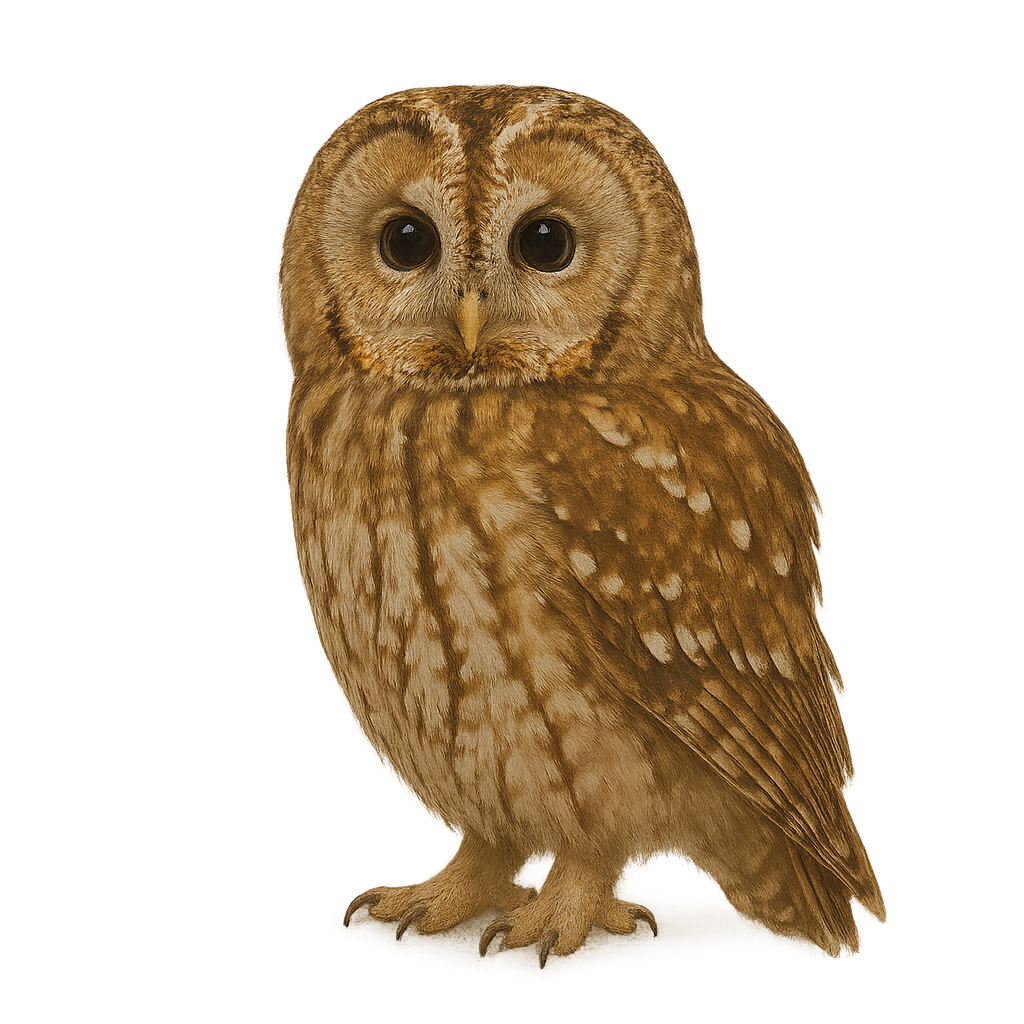Your wildlife photography guide.
Explore the tawny owl in detail, study its behavior, prepare your shots.
Where to observe and photograph the tawny owl in the wild
Learn where and when to spot the tawny owl in the wild, how to identify the species based on distinctive features, and what natural environments it inhabits. The WildlifePhotographer app offers tailored photography tips that reflect the tawny owl’s behavior, helping you capture better wildlife images. Explore the full species profile for key information including description, habitat, active periods, and approach techniques.
Tawny Owl
Scientific name: Strix aluco

IUCN Status: Least Concern
Family: STRIGIDAE
Group: Birds
Sensitivity to human approach: Suspicious
Minimum approach distance: 30 m
Courtship display: January to March
Incubation: 28-30 jours
Hatchings: March to April
Habitat:
Temperate forests
Activity period :
Mainly active at night, generally discreet during the day.
Identification and description:
The Tawny Owl is one of the most common owls in Europe, easily recognized by its round face forming a facial disc and its large, piercing black eyes. Its plumage is typically brown, with irregular white spots on the belly and back. It has a stocky body, broad wings, and silent flight, which is suited to its nocturnal hunting. This nocturnal raptor primarily inhabits broadleaf and mixed forests, as well as lowland wooded areas.
The Tawny Owl primarily hunts small mammals like rodents, as well as birds, insects, and worms. It uses its ability to fly silently to capture its prey, often in open areas like clearings, forest edges, or fields. It is also known for its characteristic calls, a deep, melodious "hoo-hoo." While its population remains stable in many parts of Europe, the Tawny Owl can be affected by habitat loss, light pollution, and human disturbances.
Recommended lens:
300 mm – adjust based on distance, desired framing (portrait or habitat), and approach conditions.
Photography tips:
Use a telephoto lens to photograph from a distance, respecting the owl’s discreet nature.
Photograph at dusk or dawn, when the Tawny Owl is most active.
Look for it in semi-wooded habitats such as forests with clearings, parks, large gardens, and even urban areas near houses.
Be patient and discreet to avoid disturbing its natural behavior.
The Tawny Owl is classified as Least Concern by the IUCN. Although it is common, it is essential to respect its natural habitat and minimize human disturbance.
The WildlifePhotographer App is coming soon!
Be the first to explore the best nature spots, track rutting seasons, log your observations, and observe more wildlife.
Already 1 427 wildlife lovers subscribed worldwide

